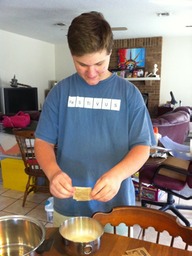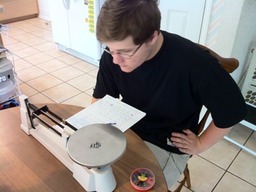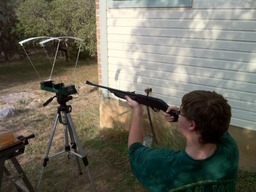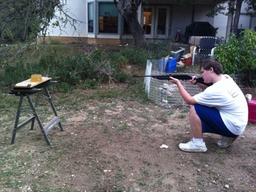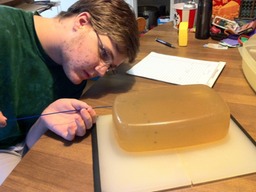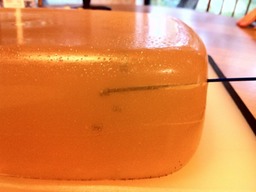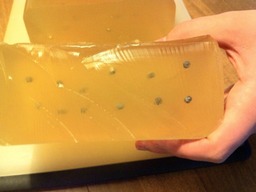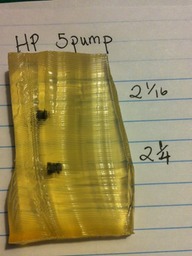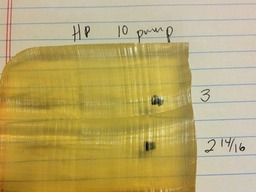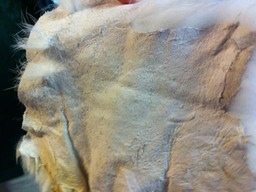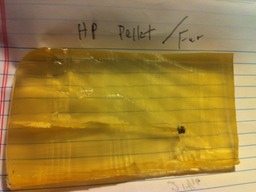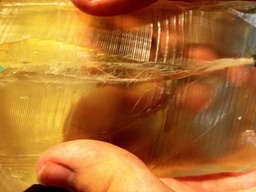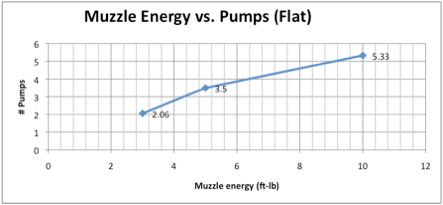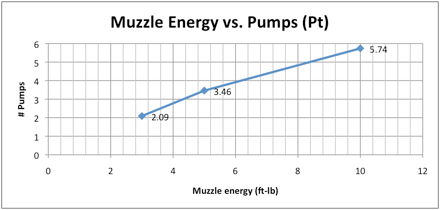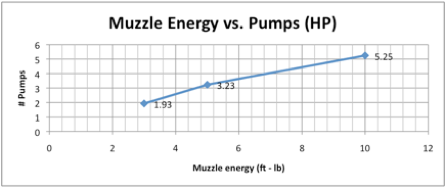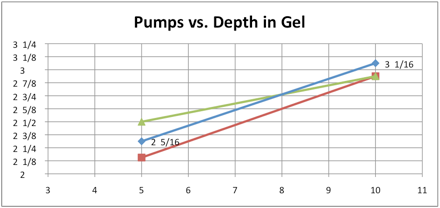by Stephen A. Mayfield
During 10th grade I did an experiment with a pellet gun that can be pumped by hand. I was testing how different numbers of pumps affected the velocities of the pellets, and how that affected the penetration into ballistics gel. I shot several pellets of each type with different numbers of pumps through a chronograph and got the average velocity for each. I used three different types of pellet, one of them was flat in the front, one of them was a hollow point, and one of them just had a pointed tip.
Results: Muzzle Energy vs. Pumps
I put the measured velocities and weights into an Excel spreadsheet and used that to calculate the muzzle energy of the different number of pumps for the different pellets. With all three pellets the amount of energy increase from 3 to 5 pump was more per additional pump, then from 5 to 10. This I would imagine is because even as you build a higher pressure, the pressure can only affect the projectile when the valve releases it. So after a certain point, no matter how much you raise the pressure, if the release of the pressure stays the same speed, only so much air will be released before the pellet is out of the barrel and no longer being affected by the extra pressure.
Muzzle energy is the kinetic energy of the pellet when it leaves the muzzle of the rifle and is equal to half mass times velocity squared. The pellet that normally had the lowest muzzle energy was the hollow point, because although it went the fastest, it was also the lightest. The flat pellet was the heaviest, but because it was also the slowest, it didn’t have the highest muzzle energy either. The pointed pellet always had the most muzzle energy because it had the best ratio between speed and weight of the three.
Results: Penetration into Gel
The pointed pellet penetrated the deepest in the ballistics gel, next was the flat pellet, and the pellet that penetrated the least was the hollow point. I believe the reason why the pointed pellet penetrated the deepest was because it had high kinetic energy, and because it had a pointed shape. The flat pellet was the next best because although it had a flat front, it was heavy enough that it still had a fair amount of energy. The hollow point penetrated the least because it was very light, and when it mushroomed out had a flat front.
hollow point pellet : flat pellet : pointed pellet
